___________________________________________________________________________
Note: I would like to share with you through these few words, photographs and hyperlinked websites, a 3 Dimensional experience as though you were actually there with us. Click on any photograph and it should enlarge to a different size ….. at least half screen or size full screen. It will be clearer in detail than the photo on the post. It will be as if you were really there looking at the actual scene. You are an arm chair traveller with us.
___________________________________________________________________________
Chamonix
| Chamonix | ||
|---|---|---|
| Commune | ||
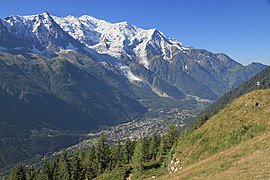
The Chamonix valley seen from la Flégère
|
||
|
||
|
Location within Auvergne-Rhône-Alpes region
|
|
| Coordinates: 45°55′23″N 6°52′11″ECoordinates: 45°55′23″N 6°52′11″E | |
| Country | France |
|---|---|
| Region | Auvergne-Rhône-Alpes |
| Department | Haute-Savoie |
| Arrondissement | Bonneville |
| Canton | Le Mont-Blanc |
| Intercommunality | Communauté de communes de la vallée de Chamonix-Mont-Blanc |
| Government | |
| • Mayor (2014–2020) | Éric Fournier |
| Area1 | 245.46 km2 (94.77 sq mi) |
| Population (2015)2 | 8,997 |
| • Density | 37/km2 (95/sq mi) |
| Time zone | UTC+1 (CET) |
| • Summer (DST) | UTC+2 (CEST) |
| INSEE/Postal code | 74056 /74400 |
| Elevation | 995–4,810 m (3,264–15,781 ft) (avg. 1,035 m or 3,396 ft) |
| 1 French Land Register data, which excludes lakes, ponds, glaciers > 1 km2 (0.386 sq mi or 247 acres) and river estuaries. 2 Population without double counting: residents of multiple communes (e.g., students and military personnel) only counted once. | |
Chamonix-Mont-Blanc,[note 1] more commonly known as Chamonix[note 2] (formerly spelled Chamounix), is a commune in the Haute-Savoie département in the Auvergne-Rhône-Alpes region in south-eastern France. It was the site of the first Winter Olympics in 1924. The commune’s population of around 8,900 ranks 1,089th within the country of France.[1]
Situated near the massive peaks of the Aiguilles Rouges and most notably the Aiguille du Midi, Chamonix is one of the oldest ski resorts in France. The north side of the summit of Mont Blanc, and therefore a summit half is part of the village of Chamonix. To the south side, the situation is different depending on the country. Italy considers that the border passes through the top. France considers that the boundary runs along the rocky Tournette under the summit cap, placing it entirely in French territory. The south side was in France, assigned to the commune of Saint-Gervais-les-Bains sharing the summit with its neighbor Chamonix. It is this situation “for France,” which is found on the French IGN maps. The Chamonix commune is popular with skiers and mountain enthusiasts, and via the cable car lift to the Aiguille du Midi it is possible to access the off-piste (backcountry) ski run of the Vallée Blanche. With an area of 245 km2 (95 sq mi), Chamonix is the fourth largest commune, in area, in mainland France.
________________________________________________________________________
Hotel Mecure in the French Alps was our base for two days from the 2nd – 3rd September 2018
This traditional alpine hotel is located in the heart of Chamonix. The Mont Blanc view hotel room provided the the comfort and services of a contemporary 4-star hotel. See https://www.accorhotels.com/gb/hotel-2808-mercure-chamonix-centre-hotel/index.shtml
From there we went out by our bus to Megeve. This town is a commune in the Haute-Savoie department in the Auvergne-Rhône-Alpes region in south-eastern France with a population of over 4,000 residents. The town is well-known due to its popularity as a ski resort near Mont-Blanc in the French Alps. Conceived in the 1920s as a French alternative to Saint-Moritz by the Rothschilds, it was the first purpose-built resort in the Alps. Originally it was a prime destination for the French aristocracy. It remains one of the most famous and fanciest ski resorts in the world.[1]
From Wikipedia, the free encyclopedia
________________________________________________________________________
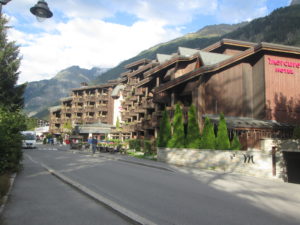
This was the hotel where 26 people stayed for two days …. Hotel Mecure

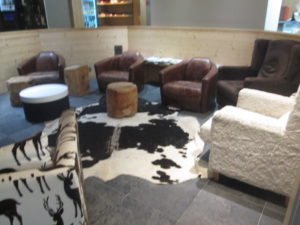
…. The lounge room you could sit in as you were waiting for someone else who was being attended in the foyer nearby …..

… Wooden stumps you could sit on and put your snowboots on or take off in winter time …
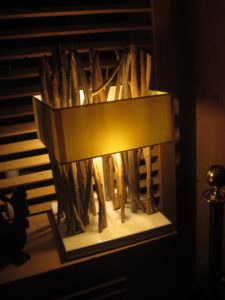
… Lighted piece of sculpture we would see each time we went down or came back from the Eating Room ….
_____________________________________________________________________________________________
CHAMONIX as a City:
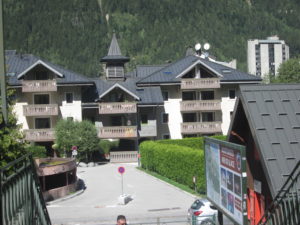
The architecture in Chamonix to what I am used to in Brisbane, Australia, is very different. Harriet and I came in the end of summer which was going into autumn. Chamonix is one of the oldest ski resorts in France. In winter there might be a metre of snow outside. The rooves of the buildings need to be able to shed snow hence rooves are more steeply pitched.
Read the website: History of Chamonix Architecture
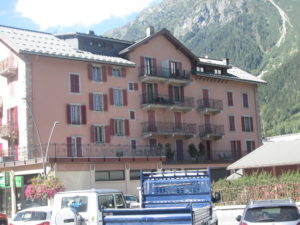

Frequently in the Chamonix streets, there would be garden boxes in stone. I have not seen garden boxes in stone like this before. The interesting thing was the strong contrast between the eye catching, luxurious and colourful flowers in the garden boxes and the ever present snow clad mountains looming over the city.
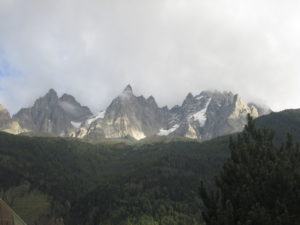
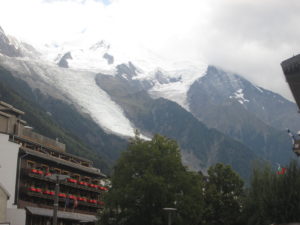
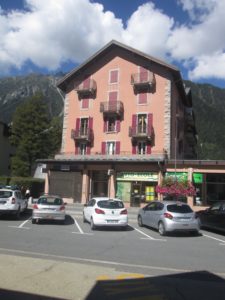
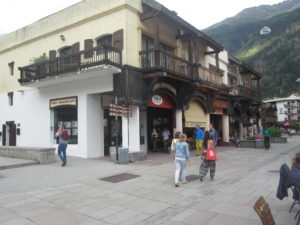
…. The shops were on the street level and there was an apartment above the shops. Each apartment had a small verandah you could sit outside and enjoy the fresh alpine air …
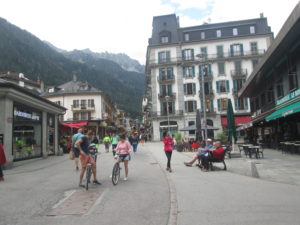
…. The city were not filled with cars but people walked everywhere …
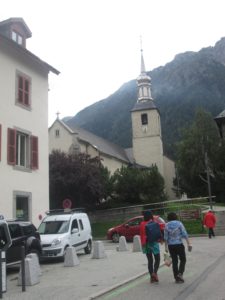
…. An old church with a spire. As Harriet and I both have a Christian Spirituality, we are always interested in looking around old churches. See what I have to say on my worldwide New Earth Community website posts:
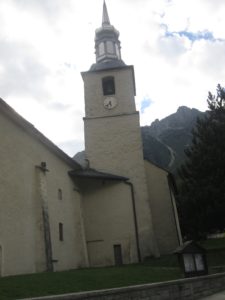
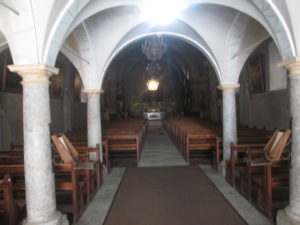
…. The interior of the old church …..
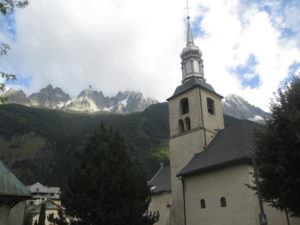
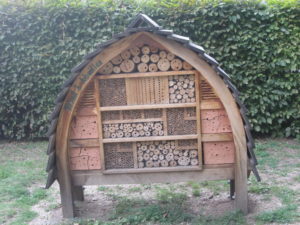
…. A beehive as piece of sculpture. Bees can nest and make honey in the various holes in the sculpture.
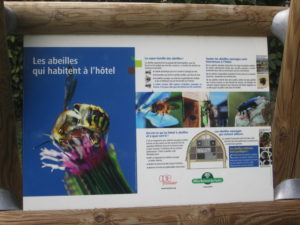
A sign as an information sheet on the bees and the way they live ….
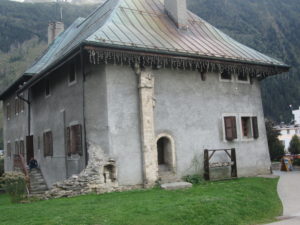
A beautiful building being being seen along the path back to our hotel.
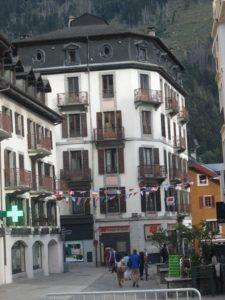
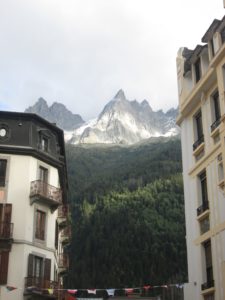
Two beautiful buildings with snow clad mountains looming over the city.
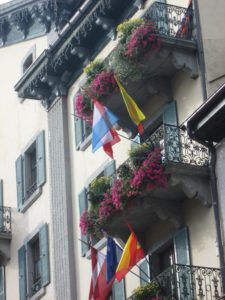
Apartments with two small verandahs with flags of various nations and a garden bed with red flowers hanging over the edge. Garden beds with red flowers hanging over the edge of verandahs was a very common sight in Chamonix.
Front and façade of the Chamonix – Mont-Blanc railway station.
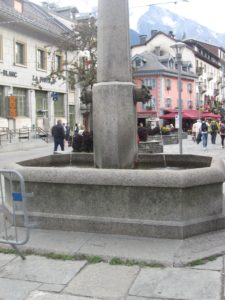
…. An eye catching water fountain in the main street ….
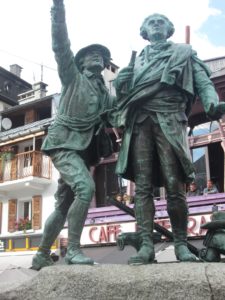
From Facts about Chamonix
The statue in Place Balmat, outside the Terrace bar, does not in fact show the two alpinists who made the first ascent of Mont Blanc. Jacques Balmat and Michel Gabriel Paccard summited the peak in 1786, after the challenge was laid down by Horace Bénédict de Saussure, a geologist from Geneva. Therefore, the statue in Place Balmat actually commemorates de Saussure, and shows him with Balmat who went on to accompany the geologist to the top of Mont Blanc in 1787. This statue was erected in 1887, while in 1986 Dr Paccard was dedicated his own statue in honour of the bicentenery of the first ascent.
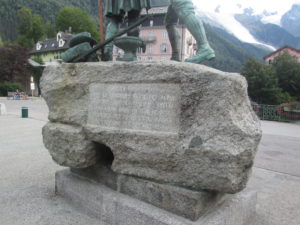
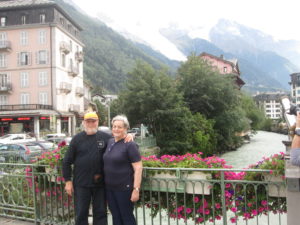
Ken & Harriet on a small bridge over the beginnings of the Arve river. Garden beds with red flowers hang over the edge of railing around the path edge. See the next photograph as well.
From Wikipedia, the free encyclopedia
Rising in the northern side of the Mont Blanc massif in the Alps, close to the Swiss border, it receives water from the many glaciers of the Chamonix valley (mainly the Mer de Glace) before flowing north-west into the Rhône on the west side of Geneva, where its much higher level of silt brings forth a striking contrast between the two rivers.
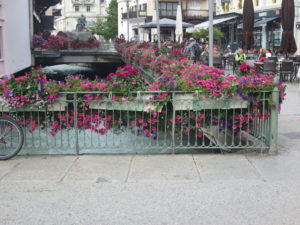
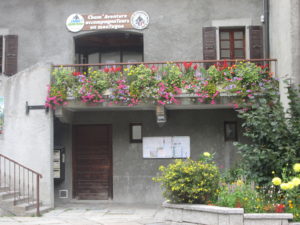
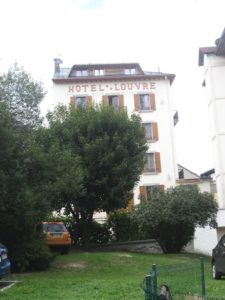
The Hotel Louvre, tallish green trees and an area of green grass, makes a pleasant change from a street of man-made structures.
From: History of Chamonix Architecture
The turn of the 20th century was the time of ‘the big palace style’, literally. Demand for big hotels increased when the first railway line was laid in Chamonix valley in 1901. Just before the First World War three real palaces were built for those guests who wanted to see in the mountains what they were used to in Paris, Versailles and Nice. The only palace that kept its deluxe status up to today was the Savoy Hotel, opened in 1904 and extended in 1909. There is Club Med there now.
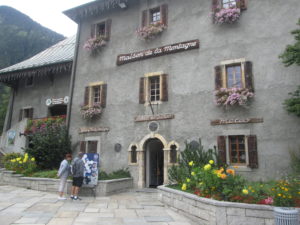
Office for the ///
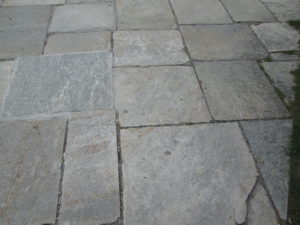
Slate paving extending from the office.
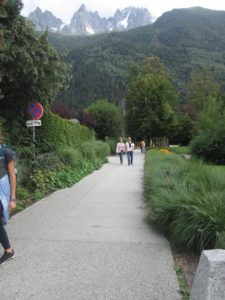
Gardens, areas of green grass, the ever present snow – clad mountains looming over the city, being seen along the short-cut path back to our hotel.
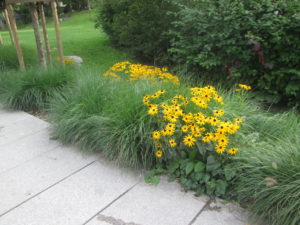
Gardens along the the short-cut path back to our hotel.
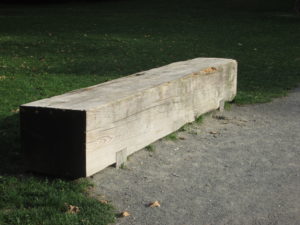
A big timber seat along the short-cut path back to our hotel.
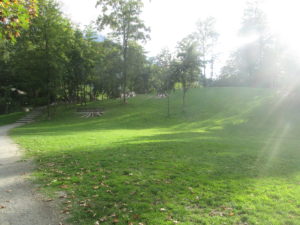
A big sloping area of luxuriant green grass being seen on the short-cut path back to our hotel.
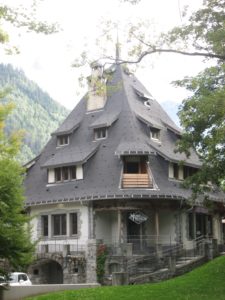
A Chalet style building with a steep roof system being seen on the short-cut path back to our hotel.
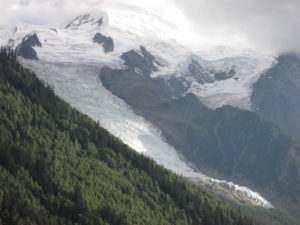
snow – clad mountains with a glacier looming over the city, being seen along the short-cut path back to our hotel.
______________________________________________________________________________



